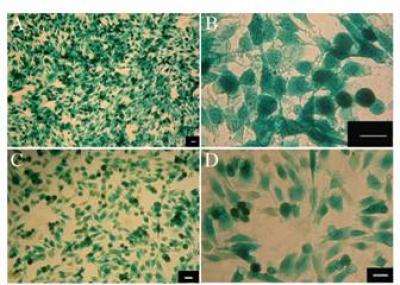Combination of cell transplantation and gene therapy for Alzheimer's disease

In a recent study published in the Neural Regeneration Research (Vol. 8, No. 33, 2013), Prof. Feng Li and team from Zhongshan School of Medicine, Sun Yat-sen University in China, synthesized a 19-nt oligonucleotide targeting BACE1, the key enzyme in amyloid beta protein (Aβ) production, and introduced it into the pSilenCircle vector to construct a short hairpin (shRNA) expression plasmid against the BACE1 gene.
Researhcers transfected this vector into C17.2 neural stem cells and primary neural stem cells, resulting in downregulation of the BACE1 gene, which in turn induced a considerable reduction in reducing Aβ protein production. This technique combining cell transplantation and gene therapy will open up novel therapeutic avenues for Alzheimer's disease, particularly because it can be used to simultaneously target several pathogenetic changes in the disease.
More information:
Liu ZH, Li SL, Liang ZB, Zhao Y, Zhang YL, Yang YQ, Wang MJ, Li F. Targeting β-secretase with RNAi in neural stem cells for Alzheimer's disease therapy. Neural Regen Res. 2013;8(33):3095-3106.
Provided by Neural Regeneration Research